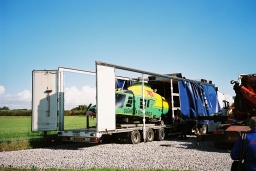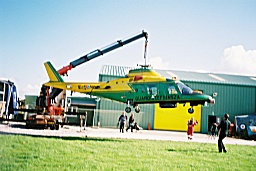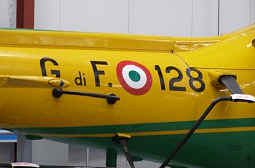Agusta A109GdiF
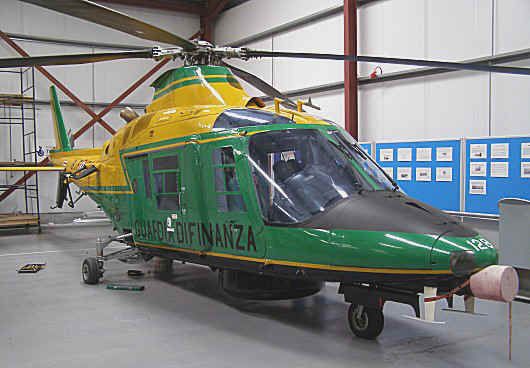 |
Agusta A109A MkII, MM81205, GdiF-128, c/n 7336, previously in service with the Italian Guardia di Finanza, was delivered to The Helicopter Museum on a curtainside trailer, on 6th October 2010. It arrived complete and, although the main rotor blades and the horizontal stabilisers had been removed for the journey, they were soon re-fitted by the conservation volunteers, after unloading. Two days later the helicopter was unveiled by UK Tourism &
Heritage Minister, John Penrose MP, and officially handed over
to The Museum by Graham Cole, Agusta Westland's Managing Director,
during a ceremony on 8th October. |
|||||||||||
| GdiF-128, the 5th A109GdiF delivered to the Guardia di Finanza, in 1986, was declared surplus to requirements in June 2010 and withdrawn from use. Before shipment to the UK it was returned to AgustaWestland for storage at Frosinone, S.East of Rome. | ||||||||||||
|
||||||||||||
"Guardia di Finanza" can be interpreted as "Tax & Customs Police". Though an integral part of the Italian Armed Forces, they come under control of the Ministry of Economy and Finance, except in times of war. Their duties are:- - Countering of personal and corporate tax evasion and avoidance. Policing of Italy's borders and coasts, by the Aeronaval service of the GdiF, involves the use of fast boats, fixed wing aircraft and helicopters, for patrol, rescue, surveillance and reconnaissance. The GdiF helicopter fleet in 2010 comprised the Agusta A109A & 109C (15), Agusta-Bell AB412HP (20) and the Breda Nardi Hughes NH-500 (33). Earlier A109As and AB412HPs were gradually replaced by the new AW109N 'Nexus' and, more recently, by the AW139 (14 expected by 2020). |
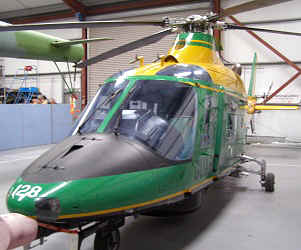 |
|||||||||||
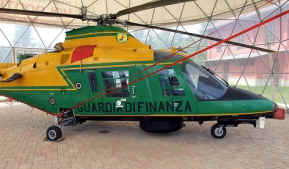 |
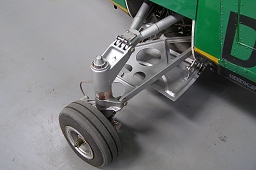 |
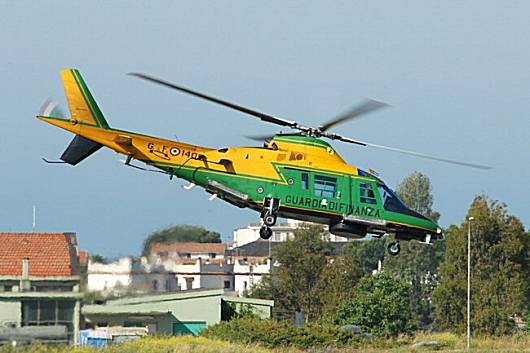 |
||
Agusta, previously best known for its line of MV Agusta motorcycles, entered the rotorcraft market in 1952 by acquiring a licence to build the Agusta Bell 47G, a strategy which was eventually extended to include, among others, the AB206B Jet Ranger III, the HH-3F Pelican and the AB.212ASW. Licence agreements with Sikorsky led to production of the AS-61 series and, with Boeing, the Meridionali CH-47C Chinook. Relatively low-key efforts in home-based design and development had produced a series of, mostly small, helicopters, none of which met with much success until the introduction of the A109 in 1967. Market analysis had convinced Agusta that there was a need for a seven-seat, 2200-2400kg weight category helicopter, targeted at the corporate owner. Buyer interest was also attracted by the aesthetic appeal of the A109, which offered a hint of the glamour which has been associated with Italian design. Twin engines, retractable landing gear, high speed and a very streamlined fuselage were identified as keys to success. The initial prototype of the basic A109A was first flown on 4th August 1971, at Cascina Costa near Milan. It was powered by two 370shp Allison 250-C14 turbines and, with six passengers, could cruise at 173mph with a range of over 350 miles. Following resonance problems in the early test stages, the second prototype flew on 27th January 1973 and full-scale production started in 1975 with slightly more powerful twin Allison 250-C20B turbines. Initially it was marketed as the "Hirundo" (Swallow), but this name was only retained for the first two or three years. In 1981 Agusta released the A109A Mark II, with a new tail rotor, an up-rated transmission system and with improved engine mountings to reduce vibration and noise. The Mk.II was also made available in wide-body configuration as the A109C, with stronger undercarriage and composite main rotor blades. Military versions were produced for the Italian army and subsequently, an anti-tank version for the Belgian Air Component. By 2009 more than twenty countries had bought A109 variants for military use including the A109GdiF, a version with a custom avionics fit, some including surveillance radar, for Italy's Guardia di Finanza. A period of financial problems in the 1980s eventually saw Agusta come under the ownership of Finmeccanica S.p.A. in Italy and a financial restructuring ensued. A long period of collaboration with Westland Helicopters in the UK, which included development and production of the EH101 (AW101), culminated in the amalgamation of Agusta and Westland, as AgustaWestland under Finmeccanica sole ownership, in 2004. In January 2017 Finmeccanica renamed itself as Leonardo. |
||||
| . | ||||
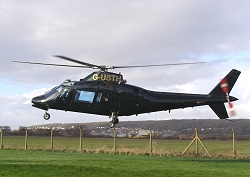 |
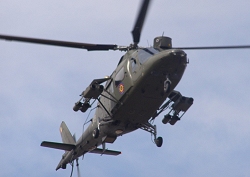 |
 |
||
| AW109A MkII, G-USTH, visited The Museum in December 2006. | Belgian AW109BA, H-45, attended Weston Helidays in July 2009 | AW109E Power Elite, ZR322, of RAF No.32 "Royal" Squadron in 2010. | ||
|
The AgustaWestland AW109E Power, which first flew in 1995, offered a higher level of benefits for government, commercial and military customers, combining improved performance with cost-effectiveness. The AW109E Power was made available fitted with either Pratt & Whitney Canada PW206 or Turbomeca Arrius 2K1 turboshafts. The AW109S Grand is a new and larger machine with improved cabin space and payload. Pratt & Whitney PW207C turboshafts with FADEC and an uprated transmission allow a much higher cruising speed and ensure an ability to take on a wide variety of roles. Deliveries began in June 2005. On 18th August 2008 an AgustaWestland AW109S Grand set up a new world speed record by completing a round-the-world trip in 271 hours and 2 minutes. The multi-role AW109N Nexus, with advanced avionics fit intended, primarily, for Italian government security roles, was introduced in 2009 and, in February 2010, the updated GrandNew was launched. |
||||
